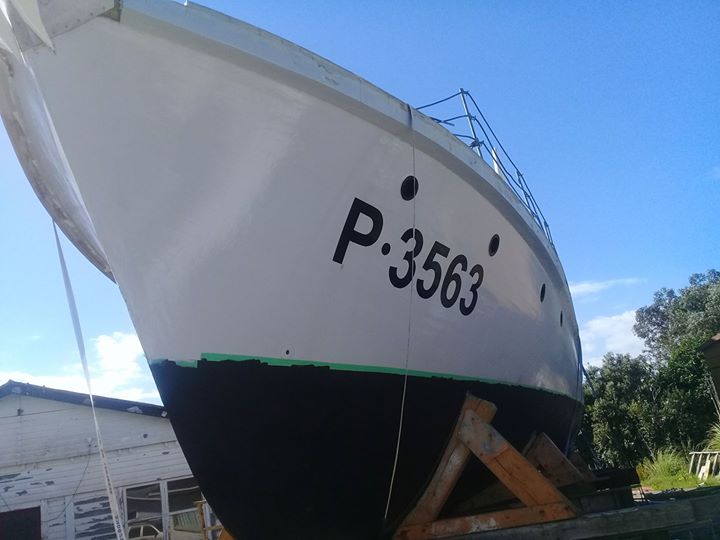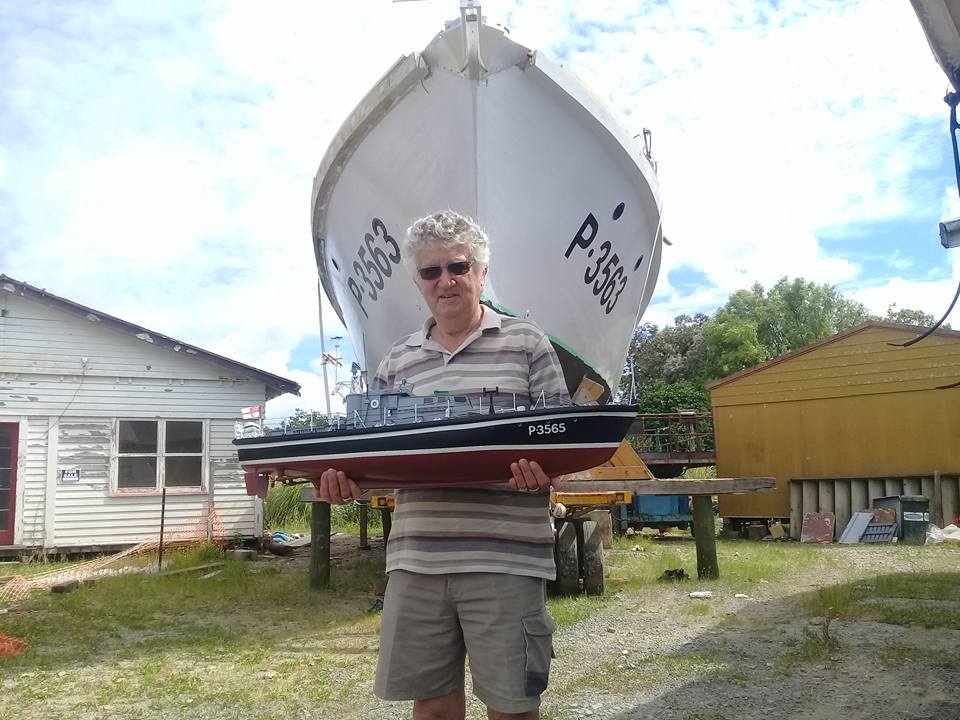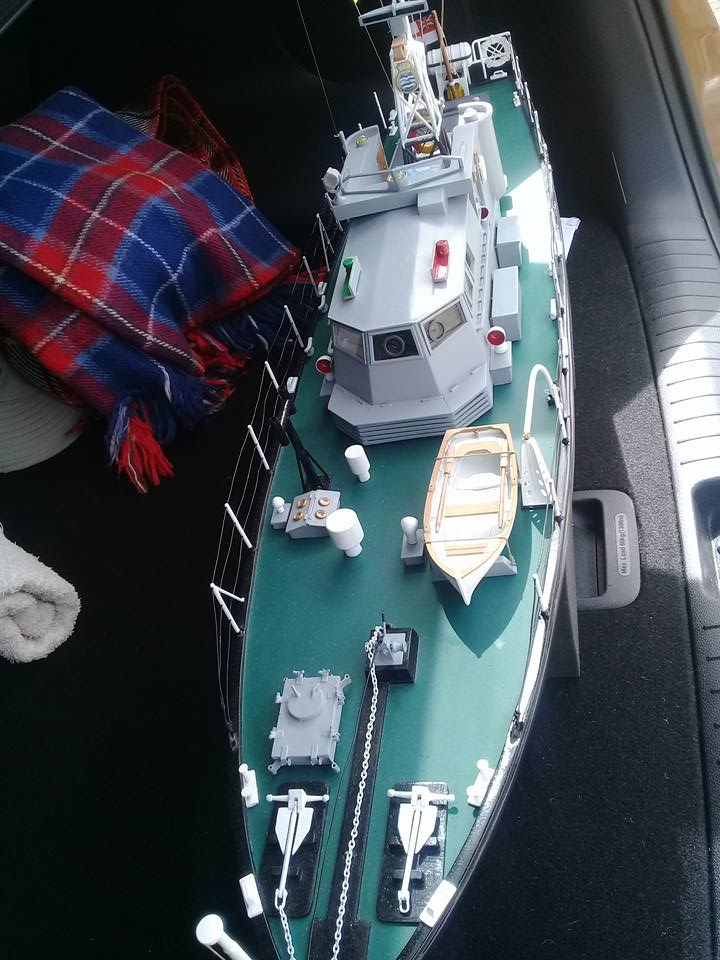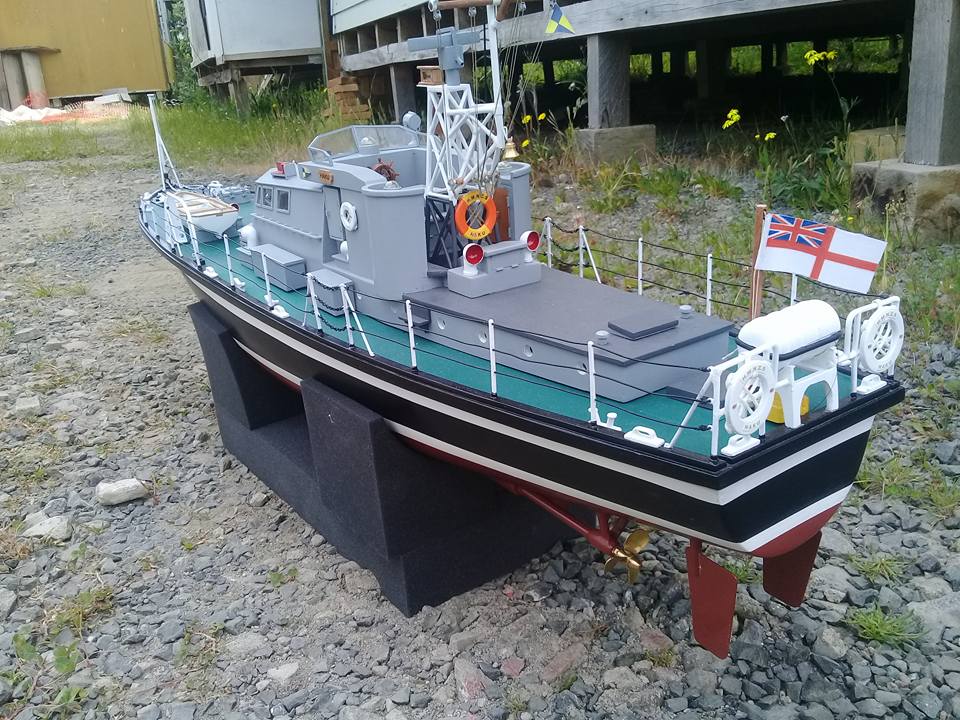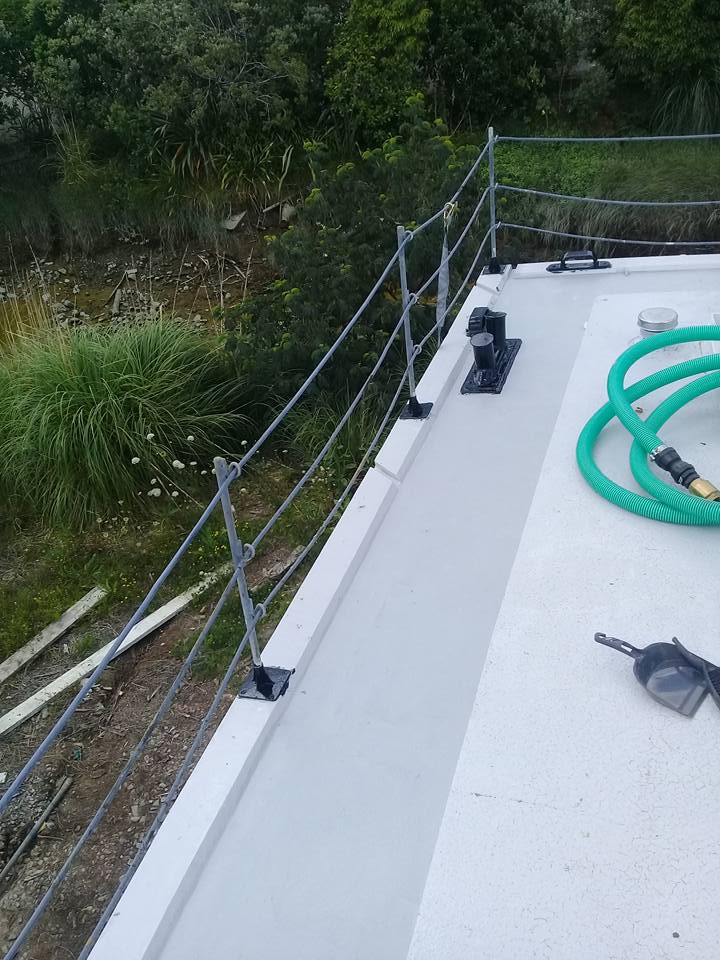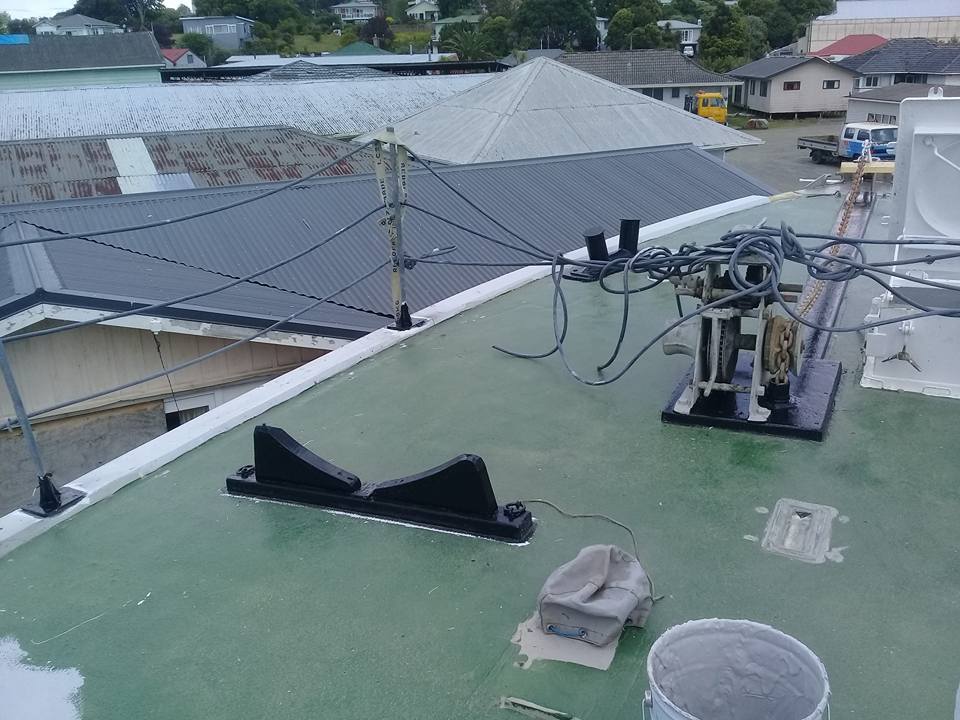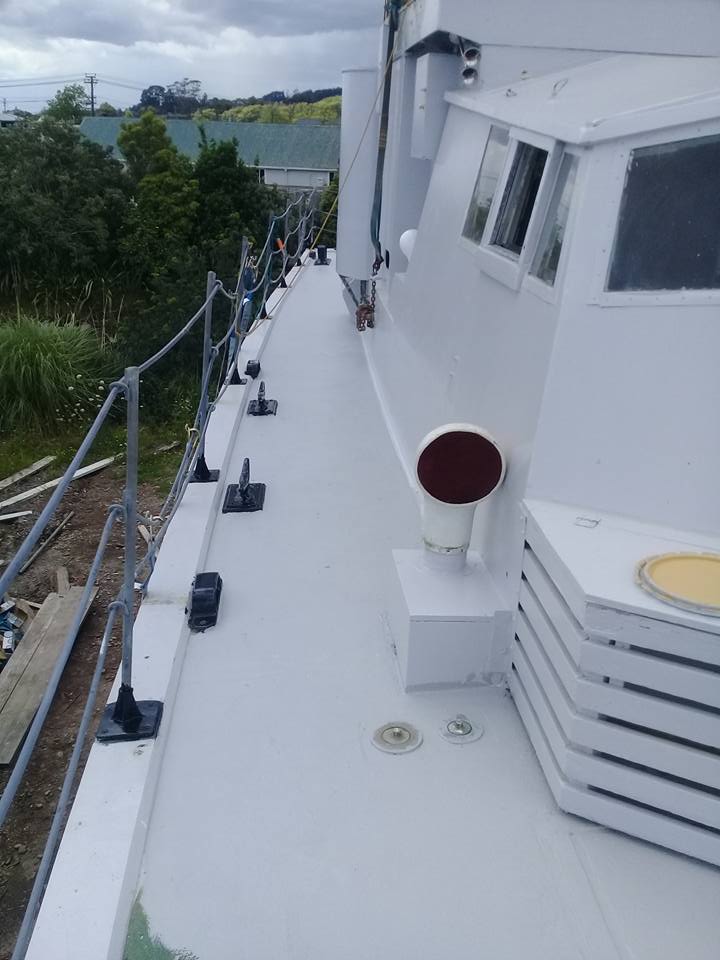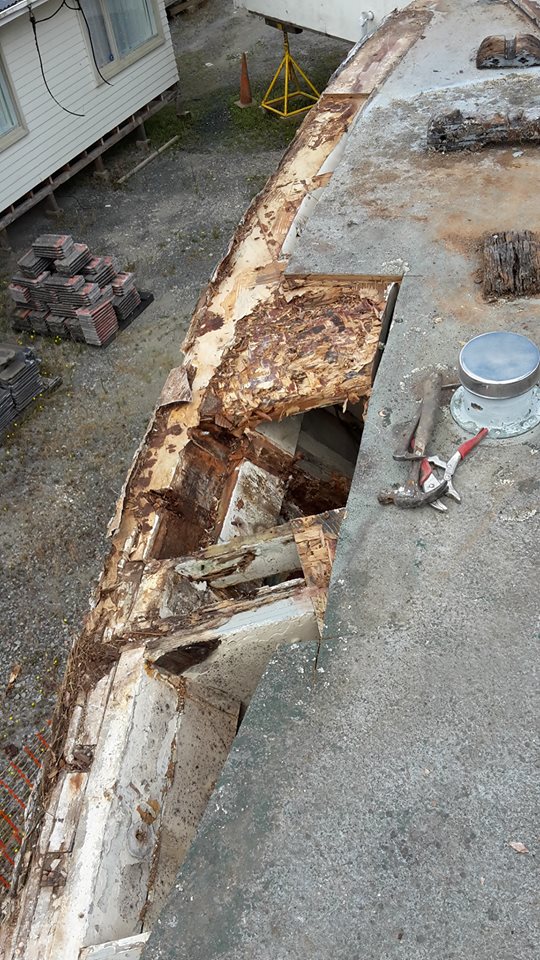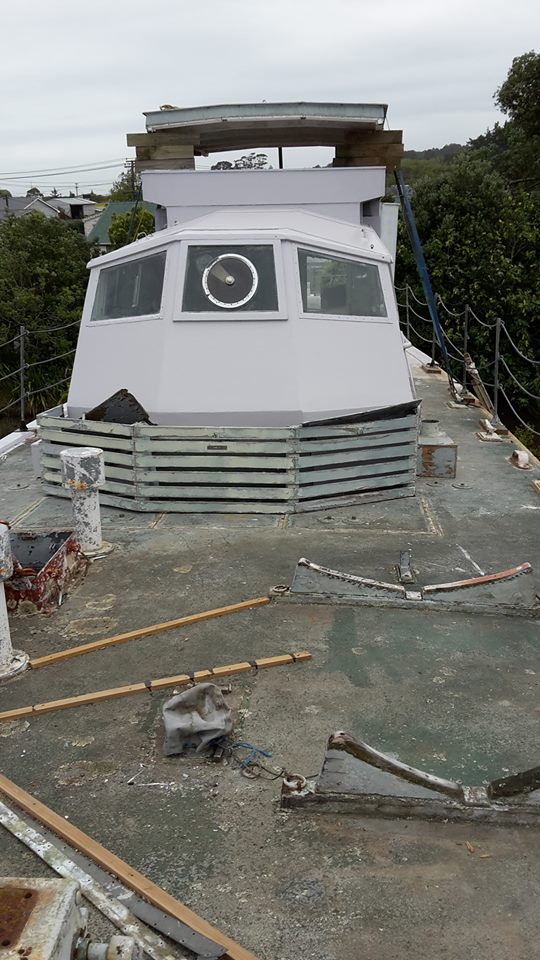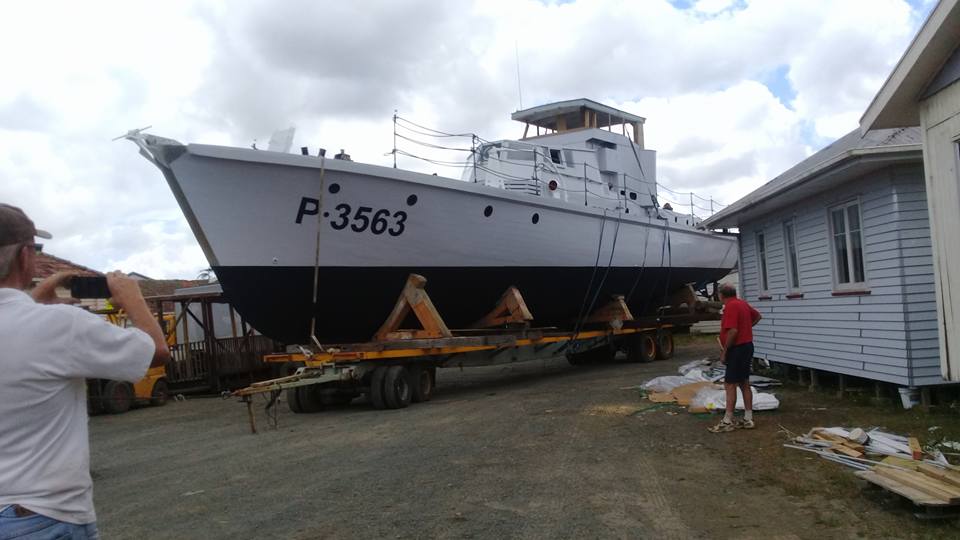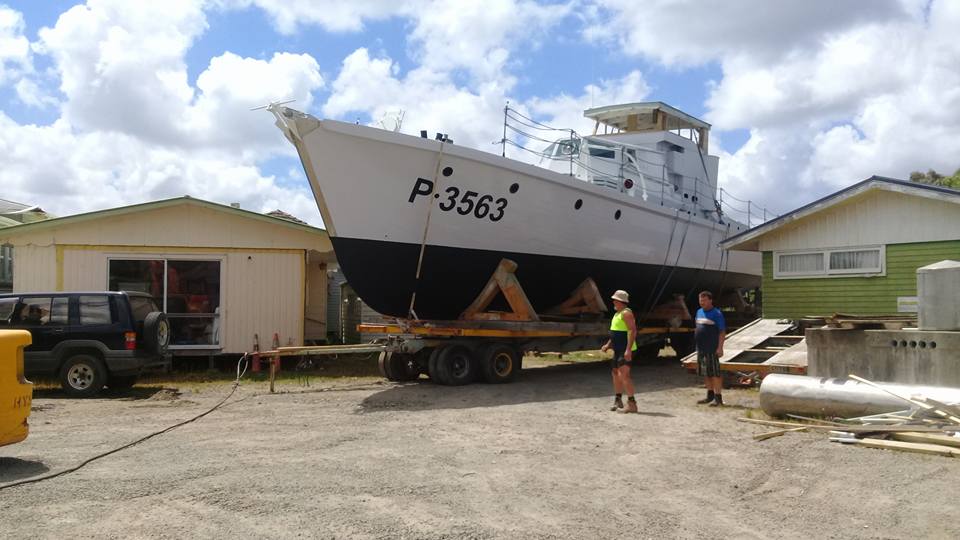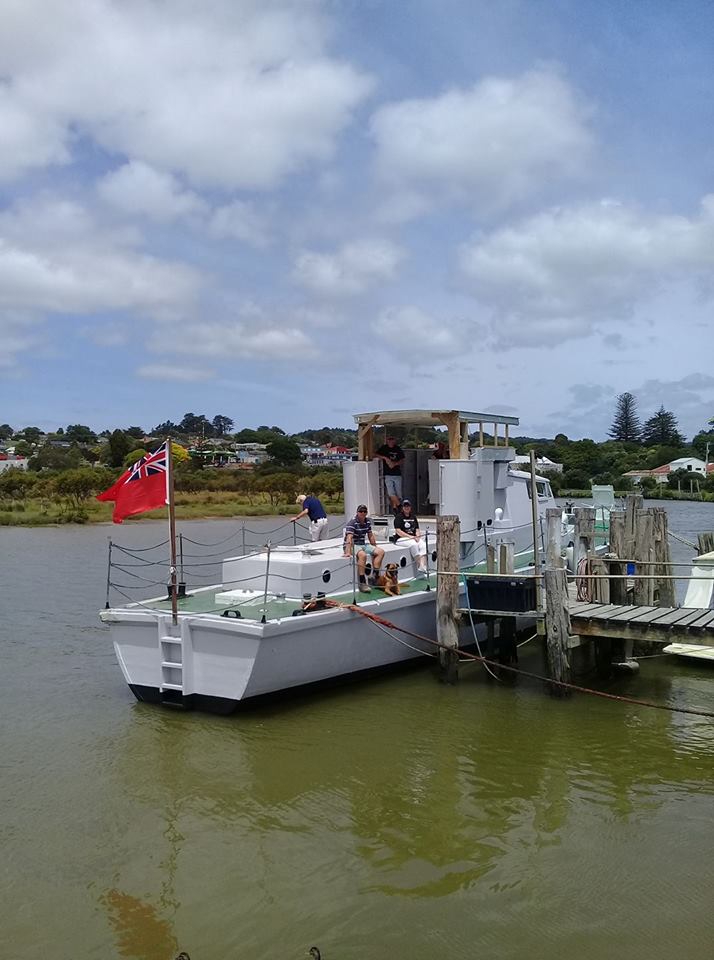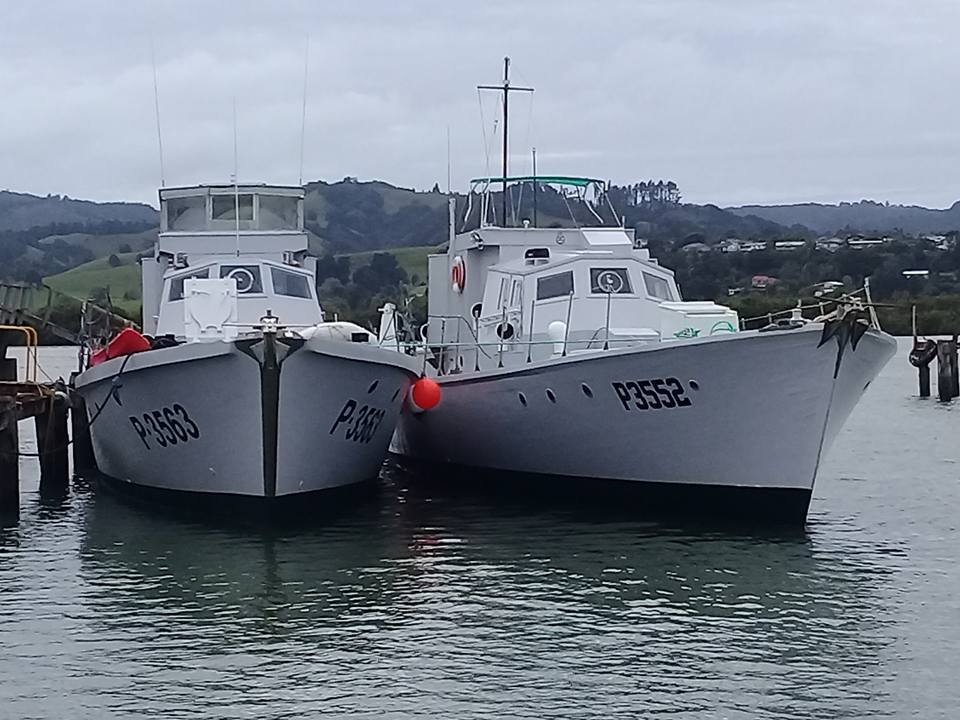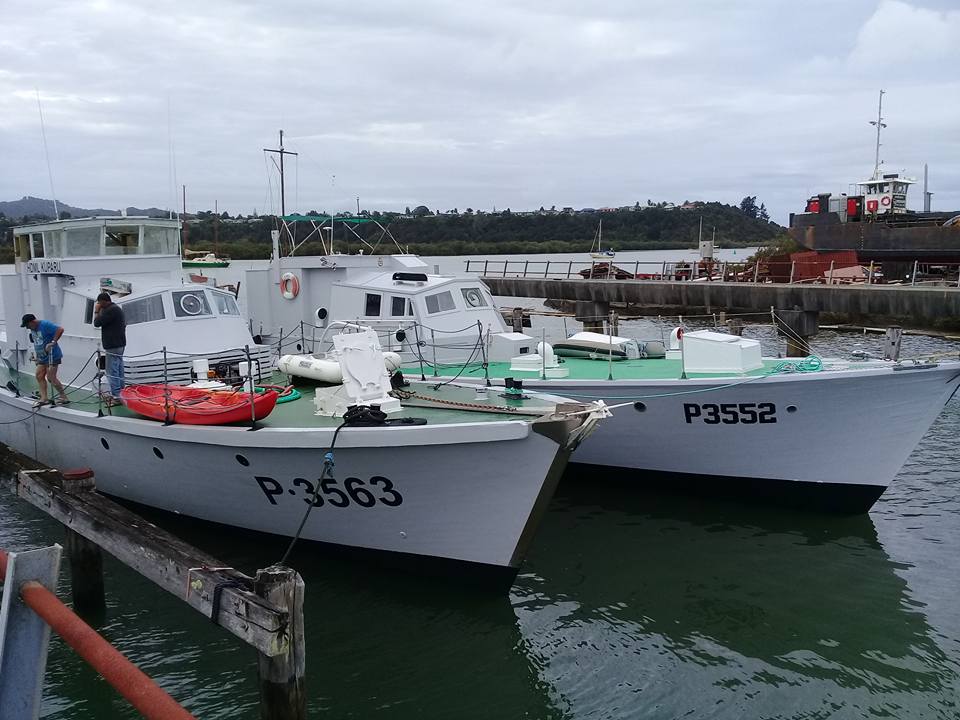This shows what a great ship building industry we once had in New Zealand, this from the Evening Post, 1 October 1945
"The first launching of 45ft boats at Auckland; they were launched eight at a time. Right, United States army tug for the South-west Pacific Command on the cradle at Steel Ships, Ltd., Auckland, just before launching. The tug, weighing 74 tons, was placed in the water by the Auckland Harbour Board's floating crane. A similar type of tug was built for the U.S. navy, South Pacific Command."

 SHIPBUILDING IN N.Z.WARTIME ACHIEVEMENTS
SHIPBUILDING IN N.Z.WARTIME ACHIEVEMENTS
DIFFICULTIES OVERCOMEAlthough New Zealand's wartime shipbuilding industry has been a comparatively small one, one fact has been established—New Zealand can build sound ships. Nearly 500 vessels, totalling in value about £3,750,000, were constructed in New Zealand during the war. They include minesweepers, "Fairmile" patrol boats, oil barges, tugs, small special purpose boats, and wooden barges. An immense amount of repair work has also been carried out in New Zealand on merchant ships, New Zealand naval vessels, and a larger number of American transports and other ships
The Minister of Supply and Munitions (Mr. D. G. Sullivan) was responsible for the Government's shipbuilding programme, and set up an appropriate organisation within the Marine Department under the direction of the Controller of Shipbuilding, Mr. James Fletcher.
Prior to the war a number of small ships had been built here, and the experience so gained enabled the war programme to be undertaken. Much experience useful for building new ships came also from repair work, and consequently sufficient skilled personnel was available at the outbreak of the war to justify serious consideration being given to the building of ships for war purposes. Skilled labour was diluted with available unskilled operators, who have thus become skilled.
The war shipbuilding programme, including some ships now being completed, was as follows: —
For Royal New Zealand Navy: composite minesweepers, ,4; steel minesweepers, 9; "Fairmile" patrol boats, 12: oil barge (non-propelled), 1. For R.N.Z.A.F.: Refuelling barges, crash launches, flare path dinghies, etc., 27,
For the United States authorities: Steel tugs, 30; wooden tugs, 50; powered lighters, 22; barges, wood, prefabricated, 40; barges, wood, completed, 100; amphibian trailers (steel), 100; wherries, wood, 60.
For the Eastern Group Supply Council: Wooden tugs, 24.
For the High Commissioner for the Western Pacific: Patrol boats, 5.
Immediately after war broke out the Government decided that New Zealand should build its own minesweepers and that the ships should be of a size and type that would be useful after the war in commerce. Vessels of the trawler class are greatly favoured by the Admiralty for minesweeping purposes and their usefulness in the war may be gauged from a statement that has been made recently that 90 per cent, or some 300 fishing trawlers, vanished overnight from a well-known fishing port in the United Kingdom, and that they won a victory over the magnetic and other types of mine.
Trawlers are usually built to withstand the most severe conditions of weather and sea. Drawings of a trawler more or less of the size contemplated were procured from the United Kingdom, and when the drawings arrived immediate steps were taken to adapt the design to that of a minesweeper for war purposes. Only minor amendments were necessary to the drawings of the engines and boilers, but many changes had to be made in the design of the hull, involving about 50 new full-size drawings.
The trawler from which the minesweepers have been developed is known as the "Castle" type, because many of them were named after famous castles in Great Britain. It was originally intended that all minesweepers were to be built of steel. The demand for the completion of some minesweepers became increasingly urgent after the loss of the Niagara in June, 1940; and it was realised that promises of early delivery of imported material were not likely to be fulfilled. Efforts were therefore temporarily diverted to obtaining minesweepers more quickly than was likely to be possible by building them of steel and completely new.
COMPOSITE CONSTRUCTION. These efforts led to the composite construction of vessels with the hull conforming as closely as possible to the hull form of the steel minesweepers, but utilising second-hand propelling engines and boilers. Three minesweepers so built were the first to be completed in New Zealand.
The situation regarding the supply of such materials as steel plates sections, plates, engine forgings, pumps, and generating' sets, compasses, and other apparatus not made in New Zealand became particularly difficult. Attention was naturally directed to kauri planking as an alternative to steel plates. Trees large enough had to be located, and new roads and bridges had in some cases to be built to reach them. To conserve the large trees hardwood was imported for the keels, which required lengths not less than 70 feet. The Forestry Department prefers to supply kauri in lengths under 30 feet, but some lengths of 40 feet and over were essential to permit a proper shift of butts in the hull planking. For hull planking and dead-woods, etc., about 40,000 feet of kauri was necessary for each ship. As a kauri tree gives only about 35 per cent, of timber of ship-building quality a considerable number of trees had to be felled. Before the timber was supplied to the yards it had to be air-seasoned for about three months. Steel sections for hull framing were obtained fairly quickly but not always in the desired sizes. By the use of timber for planking about 50 tons of steel per ship was saved.
In vessels laid up because they were beyond economical repair were engines and boilers which could be made serviceable for a few years at least at a reasonable cost. From one of these ships, which had twin screws, two engines and two boilers were obtained for two of the minesweepers, and from a single screw ship, the whole of the propelling machinery, including auxiliary machinery, was obtained. The bottleneck in the supply of imported hull materials and of engine and boiler material was thus temporarily overcome, enabling the first contracts to be placed and the building to commence.
Numerous small items in very short supply at the time were also recovered from the old vessels and reconditioned for the minesweepers. These included steam steering gears, windlasses, dynamos, auxiliary pumps, furniture doors, stairways, and hardware Most of these were of marine pattern and not procurable new at the time.
The situation regarding supplies for the steel minesweepers was at times most acute. Steel did not arrive in the order in which it was required. It is not tonnage as such that is important in the supply of materials to a shipyard: what is important is that they should come to hand in the order in which it is to be erected. Instances such as chequer plating arriving before keels had been delivered were not unknown. There was a world shortage of chain and anchors, forges (and smiths), and electrical cable was also in short supply. The plate situation in the United Kingdom and
America had become desperate by the time it was discovered that boiler plates required were not available. At one time it looked as if the minesweeper construction would be seriously delayed by shortage of material and equipment. Broken Hill Proprietary, Ltd., Australia, however, did a wonderful job.
Finally.it was arranged that the United Kingdom would supply two boilers complete and others partly constructed. As the war progressed increasing numbers of ships called here for repairs, and with the diminishing man-power available for new work, supply caught up with construction. The keels were laid in March, 1941, and the three vessels were launched in August and September of that year. The first was completed in February, 1942, and the other two were in commission less than four months later. On the face of it this programme might be held to be disappointing, but actually it was quite a creditable one, in view of the delays arising out of lack of materials.
A considerable delay was also due to a change, made three months after construction had commenced, from contact to magnetic mine-sweeping. Our shipbuilders were quite unfamiliar with magnetic minesweeping gear, the electrical apparatus is intricate, and its installation could not be unduly hurried.
STEEL MINESWEEPERS.
Additional facilities had to be found for the building of the steel minesweepers. All of them could not be built at Auckland within a reasonable period. Outside of Auckland one of the patent slips at Wellington was available, but no other convenient site could be provided except at considerable expense. At Port Chalmers, once known as the "Clyde of New Zealand," a-considerable suitable building site was located at Boiler Point.
The original building programme provided for 14 completely new minesweepers. At Auckland and Wellington very little special preparatory work on the building sites was necessary. At Port Chalmers, however, where 10 minesweepers were to be constructed, the work was planned on modern lines for mass production. A section at Boiler Point was cleared and within 24 hours of the announcement of the allocation a contract was let for the erection of the necessary buildings and plant on this site, costing about £75,000.
On completion the minesweepers were taken to sea for a four-hour continuous steaming trial when gunnery and depth-charge trials and trials of other defensive equipment were also carried out. Each minesweeper was also tested for stability and speed trials were conducted over a measured mile.
Twelve "Fairmile" patrol boats were built in New Zealand for the R.N.Z. Navy from drawings and specifications supplied by the Fairmile Marine Company of Surrey, England. Their purpose is dealing with submarines and assisting with the convoy of merchant ships, and they were built to a plan developed before the war for the building of anti-submarine boats more rapidly and cheaply than boats for this purpose were built during the previous war.
The high lights of the scheme are the centralisation of the organisation and production of standardised parts and the decentralisation of assembling work. Kauri was chosen as the material so that steel might be conserved for armaments and so that the building might be given to small firms of shipwrights expert in the construction of wooden vessels. In fact, during this war there has been a big revival in wooden shipbuilding in all countries and large numbers of Fairmile boats have been built in other Empire countries.
These boats are 112 ft long overall; they have a speed of about 18¾ knots, and their loaded displacement is 80 tons. They can keep the sea in any weather. All the components for the hulls except those built of timber were imported from the Fairmile Company. The kauri was made available by the State Forest Service and valuable overseas shipping space was thus saved. About 14,000 feet of timber was used in each ship. An interesting feature of the design is the use of bakelised plywood for the main frames, bulkheads, and engine bearers. This kind of plywood, put together with phenolic resin, is not affected by sea water, heat, or cold, and does not Warp. Petrol is stored in fuel tanks of bullet-proof construction, and the total fuel capacity is 2320 gallons.
Preparations for building ways and for cover for the boats during construction were commenced immediately the contracts for the 12 vessels were let at the end of 1941 to shipbuilding firms in Auckland. Foundation members were laid in January, 1942. The work progressed most satisfactorily and by September, 1943, all the 12 boats had been completed.
It is a tribute to the enthusiasm of the contractors and their workmen that notwithstanding the novelty of their construction the boats were completed in an average of 35,000 man-hours per boat, whereas the time given by the Fairmile Company was 40,700 hours, excluding the time required for electrical work. Taking all factors into consideration the performance was most creditable to all concerned, and pleasing references to their efficiency have been forthcoming.
TOW BOATS AND LIGHTERS. At this stage our American allies inquired as to the possibility of assisting in their requirements of tow boats, tugs, and powered lighters for the Pacific. Although the previous tasks had been Herculean, the new requests demanded the utmost in imagination and organisation. With this end in view the Minister of Supply (Mr. Sullivan) directed Mr. James Fletcher as Controller of Shipbuilding to so organise the industry that orders for over 100 vessels could be executed for United States purposes.
This necessitated the construction of one shipyard for wooden ships at the site on the Auckland foreshore where the Kauri Timber Company's mill had been destroyed by fire. Another yard was built at Mechanic's Bay for steel vessels The table above indicates the volume of production necessitating prefabrication of parts and assembly at the two yards. The question has been asked, What future has shipbuilding in New Zealand?" The future for the building of small ships is linked up with the future of transport by rail and road, but if a demand arises for small ships it could be met without the necessity for sailing them to New Zealand from abroad. New Zealand can build good ships.








